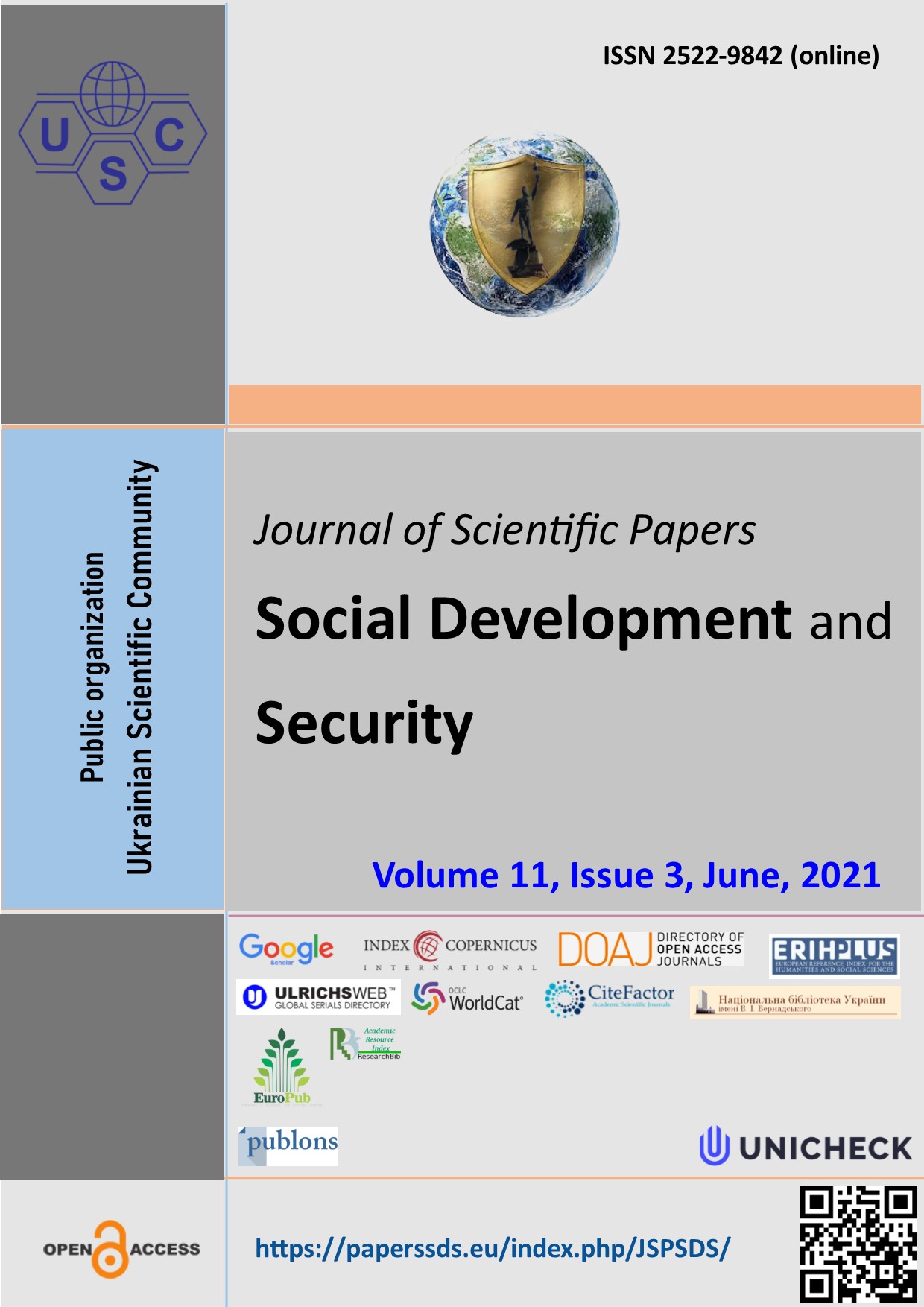Use of methods of the strategic analysis in conducting defense planning of the State Border Guard Service of Ukraine
Abstract
The State Border Guard Service of Ukraine is a component of the security and defense sector and with changing conditions and further development there is a need to conduct a review of the situation based on the analysis of strengths, weaknesses, opportunities and threats (SWOT), which is the basis for determining the main directions of the State Border Guard Service. Of Ukraine. The initial data are the existing legal framework, scenarios and situations of development of the military-political situation, functions and responsibilities of the border agency. The importance of the main parameters was determined by the method of expert assessment and with the help of SWOT analysis in the conditions of daily activity, in the conditions of complication of the situation and in the conditions of military character, opportunities and threats, the directions of further development of the State Border Guard Service of Ukraine were substantiated. . SWOT - analysis is an adequate method for conducting strategic analysis, which allows to determine the directions of development of units and subdivisions of the State Border Guard Service of Ukraine and substantiation of their tasks. Thus, the analysis identifies the strengths and weaknesses of the border agency, opportunities and threats in the day-to-day, in a difficult situation and in a military nature, which can be further used in providing proposals to determine the main activities and further development of the State. Border Guard Service of Ukraine, as well as taken into account when submitting proposals on the content of the draft Strategy of Public Safety and Civil Protection of Ukraine.
Downloads
References
Руснак І.С. та ін. Оборонне планування на основі спроможностей: особливості та перспективи впровадження. Наука і оборона. 2017. № 2. С. 3–10. DOI: 10.33099/2618-1614-2017-0-2-3-10.
Горбулін В.П. Розвиток оборонного планування як складової національної системи планування у сфері безпеки і оборони за умов наближення до процедур та стандартів НАТО : аналітична записка. Київ : НІСД, 2017. 17 с.
Буняк О.В., Бондарь Р.Г., Романюк І.М. Проблеми розвитку спроможностей сил оборони. Проблеми формування ефективної політики, системи планування і управління ресурсами в секторі оборони з використанням сучасних євроатлантичних підходів : матеріали Міжнар. наук.-практ. конф., 24 бер. 2017 р. Київ : НУОУ, 2017. С. 16–19.
Романченко І. С., Богданович Ю. В., Дєнєжкін М. М., Крикун П. М. Стан і перспективи розвитку системи оборонного планування в Збройних Силах України. Наука і оборона. 2017. № 1. С. 25–30.
Хоффман Ф.Г. Большая стратегия: основне соображения. Орбис. 2014. № 58 (4). С. 472–485. DOI: 10.1016/j.orbis.2014.08.002.
Development and Implementation of the Target Function in the Decision-Making Process in the System of Providing the Military Security of the State / V.O. Kosevtsov et al. Eastern-European Journal of Enterprise Technologies. 2020. Vol. 5, №. 3. P. 17–23. DOI: 10.15587/1729-4061.2020.215128.
National Resilienceas a Determinant of National Security of Ukraine / S. Bondarenko et al. Journal of Optimization in Industrial Engineering. 2021. Vol. 14, №. 1. P. 111–117. DOI: 10.22094/JOIE.2020.677837.
Оборонна реформа: системний підхід до оборонного менеджменту : монографія / А. Павліковський, В. Фролов, Ф. Саганюк та ін.; за заг. ред. д-ра військ. наук А. Сиротенка. Київ : НУОУ, 2020. 274 с
Братко А. В, Мисик А. Б. Роль Державної прикордонної служби України в системі воєнної безпеки в умовах гібридної війни. Честь і закон. 2021. № 1 (76). С. 5–10. DOI: 10.33405/2078-7480/2021/1/76/229210
Оборонний огляд: український вимір 2014–2018: монографія / Ф. Саганюк, А. Павліковський, П. Щипанський, В. Павленко та ін.; за заг. ред. д. військ. н., проф. І. Руснака. Київ: МО та ГШ ЗС України, НУОУ, 2019. 196 с.
Abstract views: 326 PDF Downloads: 271
Copyright (c) 2021 Artem Bratko, Dmytro Sofijan , Oleg Kovalchuk

This work is licensed under a Creative Commons Attribution 4.0 International License.
The authors agree with the following conditions:
1. Authors retain copyright and grant the journal right of first publication (Download agreement) with the work simultaneously licensed under a Creative Commons Attribution License that allows others to share the work with an acknowledgment of the work's authorship and initial publication in this journal.
2. Authors have the right to complete individual additional agreements for the non-exclusive spreading of the journal’s published version of the work (for example, to post work in the electronic repository of the institution or to publish it as part of a monograph), with the reference to the first publication of the work in this journal.
3. Journal’s politics allows and encourages the placement on the Internet (for example, in the repositories of institutions, personal websites, SSRN, ResearchGate, MPRA, SSOAR, etc.) manuscript of the work by the authors, before and during the process of viewing it by this journal, because it can lead to a productive research discussion and positively affect the efficiency and dynamics of citing the published work (see The Effect of Open Access).
















